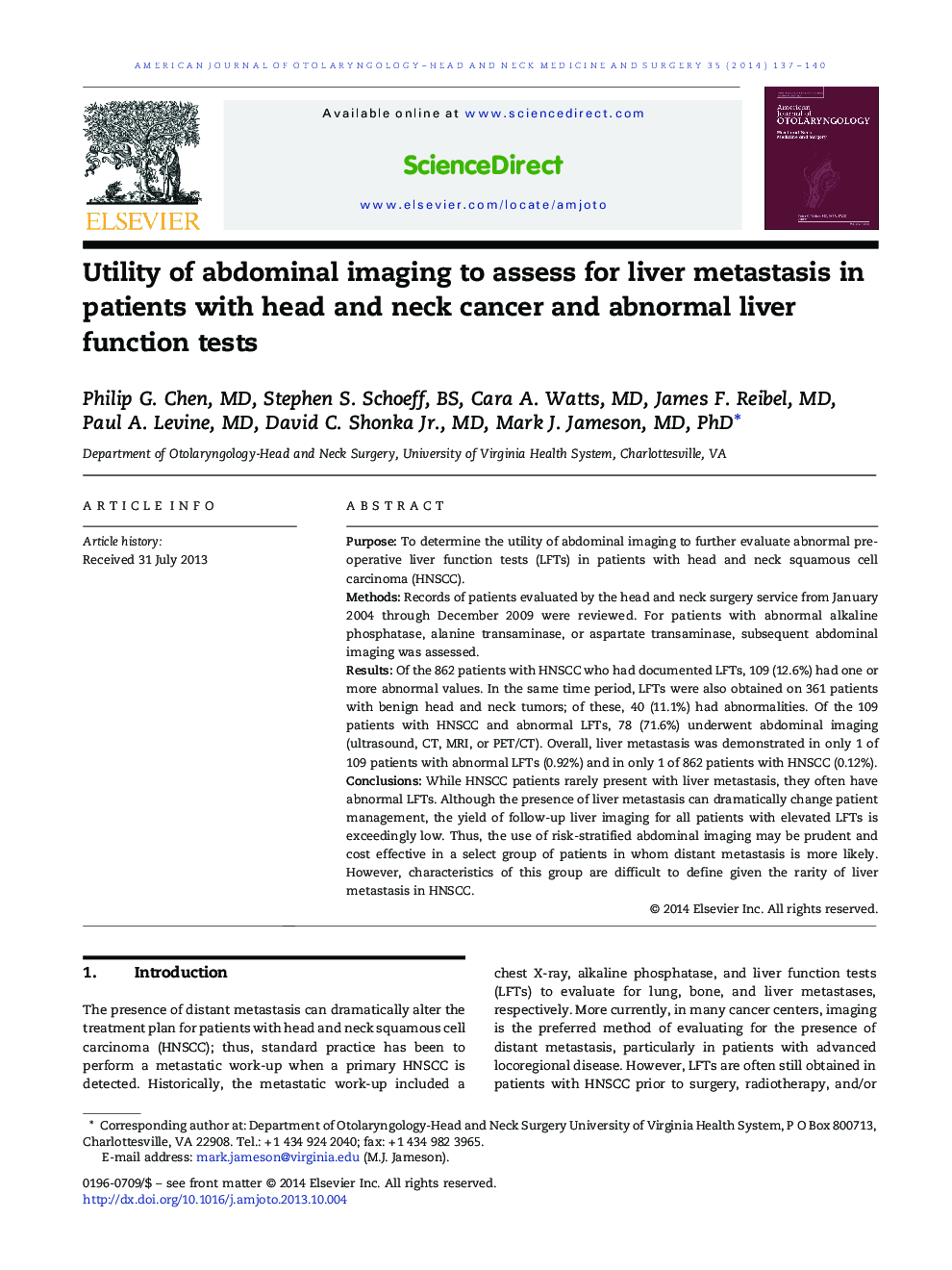| Article ID | Journal | Published Year | Pages | File Type |
|---|---|---|---|---|
| 4103489 | American Journal of Otolaryngology | 2014 | 4 Pages |
PurposeTo determine the utility of abdominal imaging to further evaluate abnormal pre-operative liver function tests (LFTs) in patients with head and neck squamous cell carcinoma (HNSCC).MethodsRecords of patients evaluated by the head and neck surgery service from January 2004 through December 2009 were reviewed. For patients with abnormal alkaline phosphatase, alanine transaminase, or aspartate transaminase, subsequent abdominal imaging was assessed.ResultsOf the 862 patients with HNSCC who had documented LFTs, 109 (12.6%) had one or more abnormal values. In the same time period, LFTs were also obtained on 361 patients with benign head and neck tumors; of these, 40 (11.1%) had abnormalities. Of the 109 patients with HNSCC and abnormal LFTs, 78 (71.6%) underwent abdominal imaging (ultrasound, CT, MRI, or PET/CT). Overall, liver metastasis was demonstrated in only 1 of 109 patients with abnormal LFTs (0.92%) and in only 1 of 862 patients with HNSCC (0.12%).ConclusionsWhile HNSCC patients rarely present with liver metastasis, they often have abnormal LFTs. Although the presence of liver metastasis can dramatically change patient management, the yield of follow-up liver imaging for all patients with elevated LFTs is exceedingly low. Thus, the use of risk-stratified abdominal imaging may be prudent and cost effective in a select group of patients in whom distant metastasis is more likely. However, characteristics of this group are difficult to define given the rarity of liver metastasis in HNSCC.
